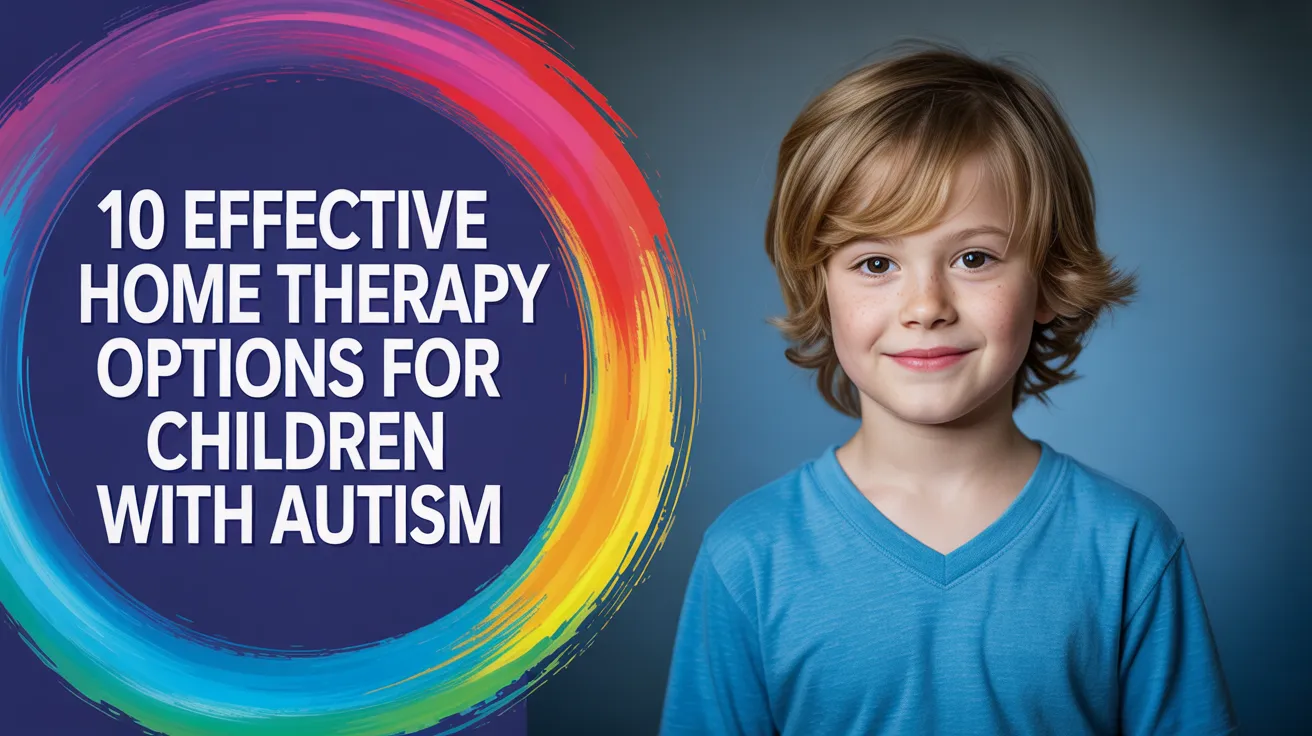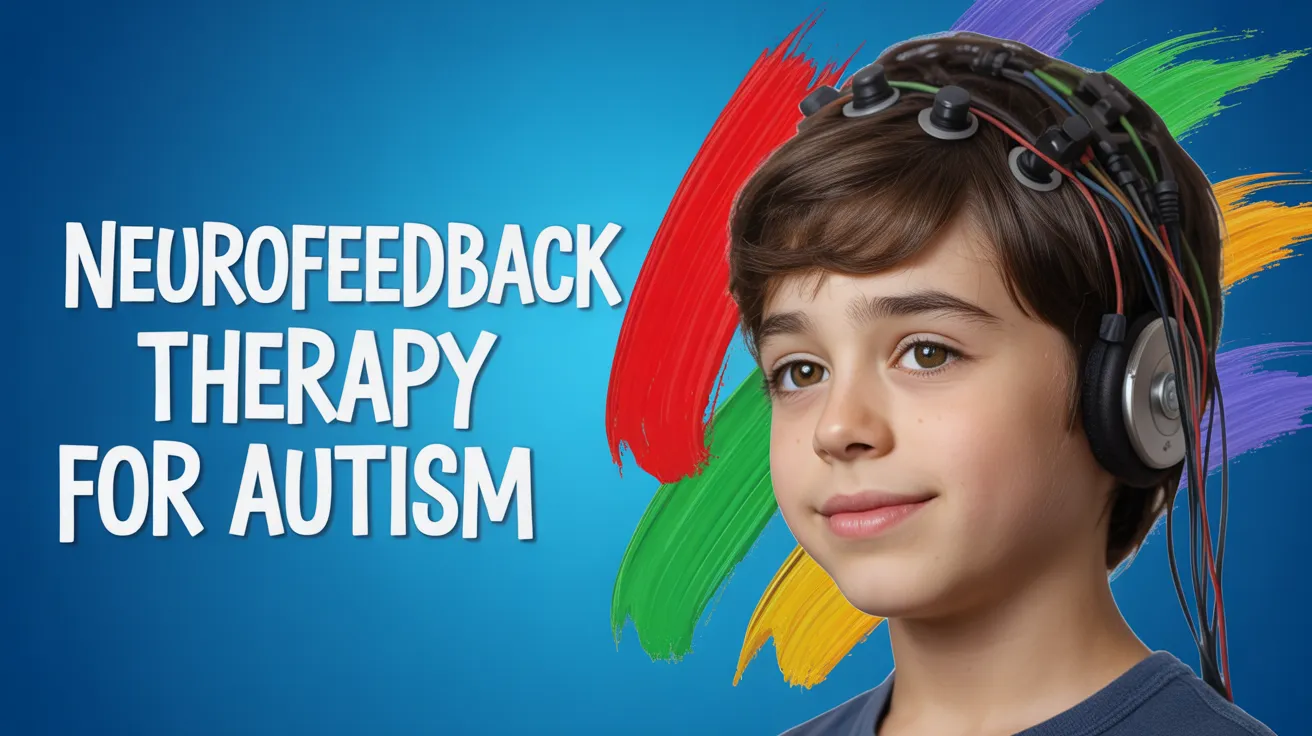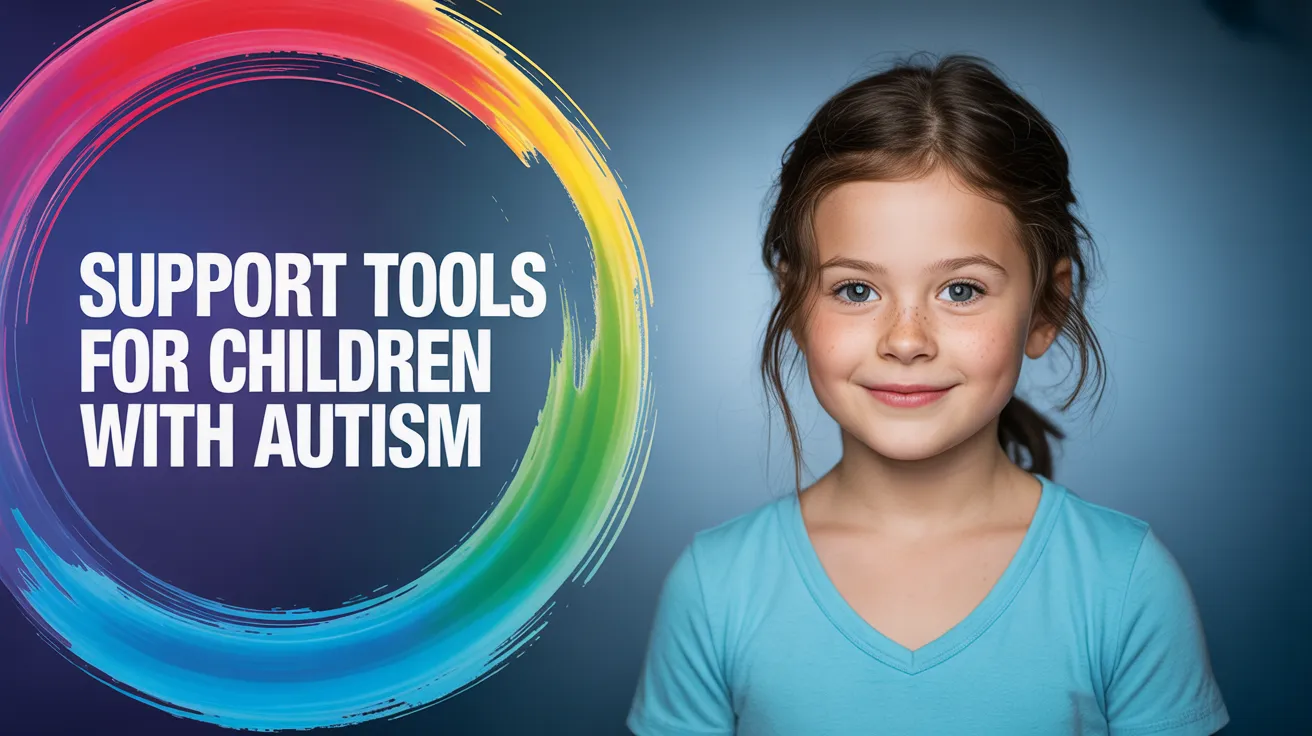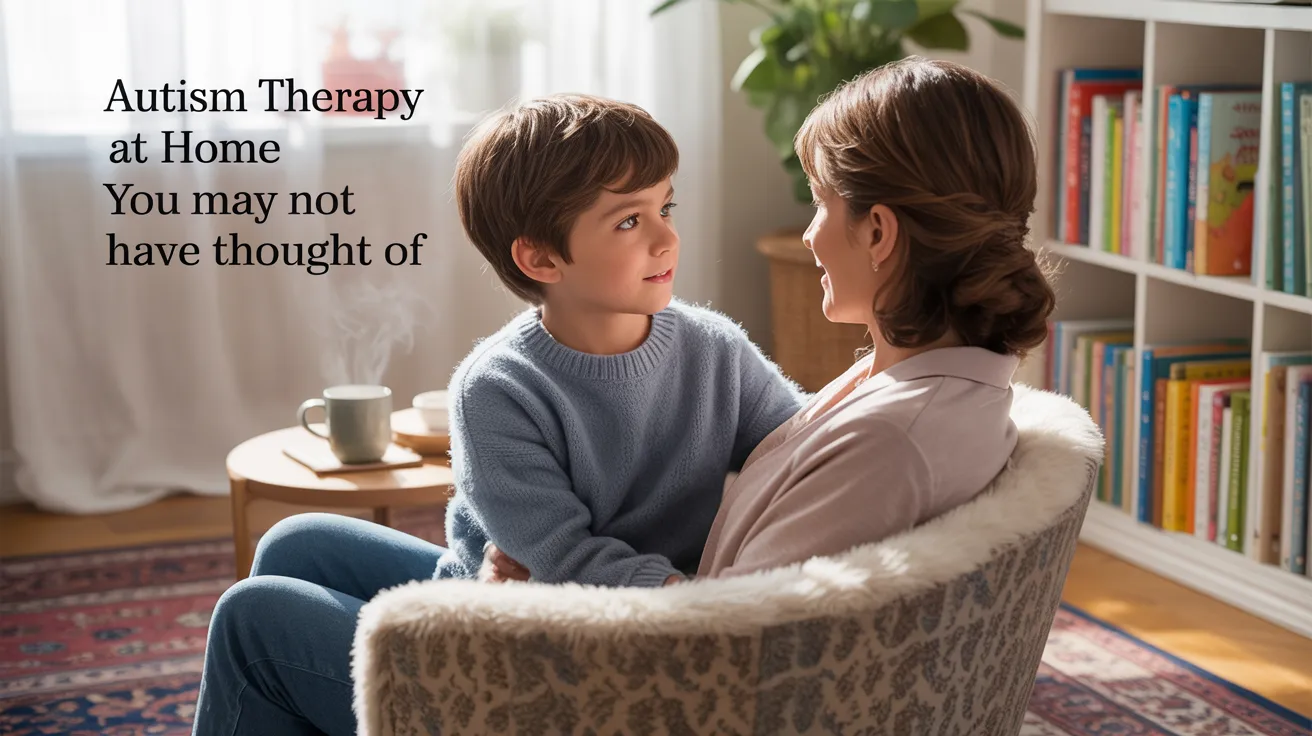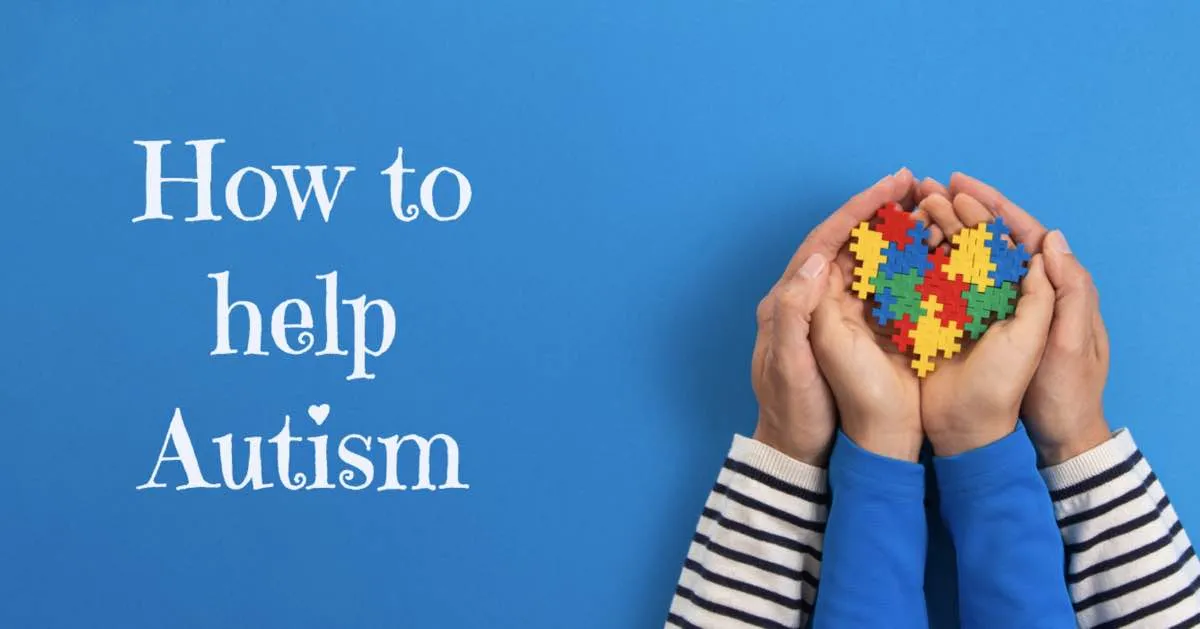Introduction
Welcome to the world of home-based autism therapy, where your living room might just transform into a haven of growth and development. As parents, you're constantly seeking new avenues to help your child navigate the complex tapestry of autism spectrum disorder (ASD). The good news is that many effective strategies can be practiced right from the comfort of your own home, offering a personalized touch that can make all the difference.
In recent years, there has been a significant shift towards therapy at home for autism. This movement is not only about convenience but also about creating an environment that's as familiar and comforting as your child's favorite bedtime story. The advantages? You become an integral part of the therapeutic process, strengthening both skills and bonds in ways you might not expect.
Consider this: A study published in Research in Autism Spectrum Disorders highlights how parent-led interventions can significantly improve social communication skills in children with autism[1]. It's all about empowering you with the tools to support your child’s unique journey, embracing dietary and lifestyle choices that nurture neuroplasticity and overall well-being.
The Magic of Home Therapy
Familiarity: Children thrive in environments they know and love.
Consistency: Regular therapy sessions at home ensure consistent practice without interruptions.
Cultural Relevance: Tailor interventions to align with your family's values and routines.
A Cost-Effective Approach: Avoids hefty fees associated with clinical settings while offering flexibility.
The beauty of these at-home therapies lies in their flexibility and adaptability, allowing you to implement strategies that best fit into your everyday life. From sensory integration techniques to behavior management strategies, these approaches are designed to be as diverse as they are practical.
No one said parenting would be easy, but with a little humor and a lot of love (and perhaps an extra cup of coffee), you have everything it takes to make profound strides alongside your child. So let's dive deeper into how you can harness these resources effectively within your home environment, paving the way for positive changes one step at a time.
Create a Sensory-Friendly Environment
Creating a sensory-friendly environment at home can be a game-changer for children with autism. Think of it as building a comfort zone where your child can thrive and feel at ease. Here’s how you can set up such an environment, peppered with some tangible tips:
1. Understand Sensory Preferences
Every child is unique, especially when it comes to their sensory needs. Some might be drawn to bright lights and loud music, while others may prefer a dimly lit room with soft sounds. Understanding these preferences is crucial for creating a customised home therapy for autism that truly works.
2. The Magic of Weighted Blankets
Weighted blankets have been reported to provide calming effects for children with autism by offering deep touch pressure stimulation. It's like getting a gentle bear hug whenever they need one! To learn more about the benefits of early interventions like this, check out our article on early intervention and autism.
3. Create Zones for Different Activities
Quiet Zone: Dedicate an area where your child can retreat when overwhelmed. Equip it with soft cushions, noise-canceling headphones, and familiar toys.
Play Zone: This should be an area filled with stimulating toys that encourage play-based therapy—think puzzles, building blocks, and art supplies.
Sensory Zone: A dedicated space with sensory bins, textured fabrics, or even a small ball pit can be both fun and therapeutic.
4. Control Lighting and Noise Levels
The right lighting can make all the difference. Use dimmers or lamps instead of harsh overhead lights to create a calm atmosphere. Moreover, keep noise levels consistent; consider using white noise machines if needed to mask disruptive sounds.
5. Incorporate Nature's Elements
If possible, bring in nature! Plants not only purify the air but also add tranquility. If you're feeling adventurous, maybe introduce some safe aromatherapy scents that your child finds soothing—think lavender or vanilla.
A Final Thought...
Your home is your child's sanctuary. By tailoring the environment to their sensory needs, you’re not just providing comfort; you’re laying down the groundwork for successful in-home autism therapy sessions. Remember: small changes often lead to big differences in comfort and engagement!
Incorporate Routine-Based Activities
One of the most effective home therapy strategies for children with autism is to incorporate routine-based activities. Consistency and structure can provide a sense of security and predictability, which are crucial for children on the autism spectrum. Establishing daily routines not only helps in reducing anxiety but also promotes independence by allowing children to anticipate what comes next.
The Power of Structure
Routine-based activities can range from simple daily tasks like brushing teeth and dressing up, to more complex activities like setting the table or organizing toys. It's important to break down tasks into manageable steps. For instance, you can create a visual schedule using pictures or symbols that depict each step of a task. This approach taps into visual learning strengths, which are often present in autistic children.
Morning Routine: Start the day with structured morning activities that include wake-up times, breakfast, and getting dressed. Visual schedules can help make transitions smoother.
Meal Times: Involve your child in meal preparation. It’s an excellent way for them to learn about different textures, smells, and tastes while encouraging social interaction.
Bedtime Rituals: Create a calming bedtime routine. Calming activities before bed include reading a book or listening to soothing music.
You might be surprised at how much simpler life becomes (for both you and your child) when there’s a predictable plan in place. According to research published by the National Center for Biotechnology Information (NCBI), routines can significantly improve adaptive behavior skills in children with autism (source). These skills are fundamental for daily living and self-care.
Making Adjustments
The beauty of routine-based activities is that they’re customizable. You can adapt them based on your child’s needs and responses. Observe how your child reacts to each part of the routine and make necessary tweaks. Remember, flexibility is key; sometimes routines may need adjustments due to unforeseen circumstances or simply because it's time for a change.
If you'd like more insights on early interventions for autism, explore our detailed discussion here: Can Early Intervention Cure Autism.
By integrating routine-based activities into your child's daily life, you're laying down a foundation that not only supports their current development but also enhances their ability to learn new skills over time. So go ahead, chart out those schedules—because who knew having 'scheduled spontaneity' could be this rewarding?
Engage in Play-Based Learning
Play is a universal language that children understand, and for those on the autism spectrum, it's no different. Engaging in play-based learning is not only a fun way to bond with your child but also an effective method to encourage development across multiple domains.
The Power of Play
Did you know that play can improve social skills, language development, and cognitive growth? According to research from Autism Speaks, structured play is crucial for enhancing communication skills in autistic children. By turning therapy into a game, you can harness the magic of play to support your child's development.
Role Play: Dress up as characters and engage in simple role-playing scenarios. This helps improve imagination and social interaction.
Puzzle Games: Puzzles are great for developing problem-solving skills. Plus, who doesn’t love that 'aha!' moment when all pieces fit perfectly?
Sensory Bins: Create sensory tubs with items such as rice or beans. These bins provide tactile stimulation—an essential aspect of sensory integration techniques at home for autism.
A Personal Touch: Customise and Adapt
No two children are the same, which means no two play-based learning sessions should be identical either. Customise activities based on your child's interests and needs. You might find that they are more interested in dinosaurs or space adventures—go ahead and incorporate these themes into your sessions!
If you're looking for more insights on how early intervention can make a difference, check out our article on whether early intervention can cure autism: Can Early Intervention Cure Autism?
Integrating Technology: A Modern Twist
In our digital age, technology can be a fantastic tool in play-based learning. Consider apps designed specifically for autistic children that offer interactive stories or games to build critical thinking skills. This makes therapy feel less like "work" and more like an exciting adventure!
The key takeaway? Use imaginative play as a bridge to connect with your child and foster growth in new areas. Remember, every playful moment is an opportunity for learning.
For more personalized home autism programs and tips on adapting the home environment for autism therapy success, stay tuned to our blog at Natural Autism Support.
Implement Parent-Led Behavioral Interventions
Imagine being your child's superhero, cape and all, when it comes to managing and improving their autism symptoms. One of the most powerful tools in your superhero toolkit? Parent-led behavioral interventions. By taking an active role in these strategies, you become an essential part of your child's support system – a role that not only empowers you but also creates a nurturing and familiar environment for growth.
Understanding Parent-Led Interventions
Parent-led interventions are exactly what they sound like: therapies guided by parents under professional supervision, often adapted for home settings. These strategies can be molded to fit seamlessly into daily routines, making them accessible and practical for families. They focus on teaching new skills and reducing challenging behaviors by using structured techniques akin to Applied Behavior Analysis (ABA).
Three Core Benefits of Parent-Led Interventions
Consistency: Children with autism thrive on routine. When you incorporate therapy sessions into everyday activities at home, it provides a consistent structure that supports learning and behavior improvement.
Customization: No one knows your child better than you do! Parent-led interventions allow for personalized approaches that cater to your child's unique needs, strengths, and preferences.
Cohesion: These interventions foster family involvement, encouraging siblings to participate as well. It turns therapy time into family time, promoting a supportive home atmosphere.
Examples of Effective Parent-Led Strategies
The beauty of parent-led interventions is their flexibility. Here are some strategies you might find useful:
Modelling Desired Behaviours: Demonstrate desired behaviors or responses in everyday situations. This could be as simple as practicing turn-taking during playtime or using calm words when expressing emotions.
Positive Reinforcement: Encourage good behavior by giving praise or small rewards. For instance, if your child completes a task independently, celebrate their achievement with claps or favorite stickers.
Visual Schedules: Use visual aids like charts or picture cards to outline daily routines or tasks. This helps children understand expectations and transitions between activities smoothly.
The goal is not only to manage autism symptoms but also to build a foundation for lifelong skills. To learn more about how early intervention can set the stage for success, check out our article on early intervention strategies.
No need for tights or superpowers – just patience, love, and the belief that you're doing something truly impactful for your child’s development. Remember, it's these small steps taken together that make giant leaps towards progress.
Utilise Online Resources & Virtual Support
Welcome to the digital age, parents! While our kids might be teaching us a thing or two about technology, it’s time we leverage it for their benefit. The realm of therapy at home for autism has expanded vastly, thanks to the internet and virtual platforms. Whether you're looking for DIY tools or professional guidance, the virtual world can be your best ally.
Why Embrace Virtual Autism Therapy?
Convenience: Access therapies from the comfort of your living room.
Flexibility: Schedule sessions around your family's timetable.
Diverse Resources: From videos to interactive apps, there's something for every child.
In our recent blog post on thoughts about autism therapy, we discussed how early intervention could make a staggering difference. With online resources and virtual support, you can introduce early interventions right at home!
Navigating Through Online Resources
The vast ocean of online content can be overwhelming. Here’s how you can find the gems:
Tried and Tested Platforms: Websites like Autism Speaks offer reputable resources and workshops that are designed by professionals.
YouTube Channels: Many certified therapists share free tips and techniques through engaging videos.
Apps for Autism: Consider apps like Proloquo2Go and Endless Reader which aim to improve communication skills in a fun way.
A little humor break: If only our vacuum cleaners were as efficient at cleaning up online misinformation as they are with crumbs!
The Rise of Teletherapy
The global shift towards teletherapy has made professional guidance more accessible than ever before. Participating in these sessions virtually ensures that children receive expert care despite geographical barriers.
At-home ABA Therapy: Engage with behavior analysts from anywhere in the world without stepping out of your house.
Sensory Integration Techniques: Work on techniques under professional supervision through live video consultations.
Coping Strategies at Home for Autistic Individuals: Learn personalized strategies tailored to your child's unique needs through comprehensive virtual sessions.
The key is consistency; use these tools regularly to see a positive impact on your child's skills and behaviours. Remember, as you navigate this journey, you're not alone. There are countless families adapting their homes into nurturing environments with great success.
If you’d like more insights on effective autism therapies, check out our detailed discussion on the importance of primitive reflexes in autism therapy - it's definitely worth a read!
Your dedication to exploring all avenues is commendable, and utilizing online resources can significantly contribute to creating a holistic approach within your home environment that benefits not only your child but your entire family dynamic. Keep going; progress is just a click away!
Focus on Communication Skills with In-Home Speech Therapy
When it comes to working on communication skills at home, speech therapy can be a real game-changer. Imagine your child opening up like a blooming flower, each petal representing a new word or phrase they’ve learned. At Natural Autism Support, we believe in empowering parents with effective strategies to make this bloom happen right at home.
Why In-Home Speech Therapy?
Comfortable Setting: Your child is more likely to engage in activities when they're comfortable. Home is their safe space, away from the stressors of unfamiliar places.
Customised Approach: You can tailor the therapy sessions to suit your child's unique needs and learning pace. Besides, who knows your child better than you do?
Flexible Scheduling: Fit the sessions into your family's routine without the hassle of commuting or rigid schedules.
How to Make It Work
A successful in-home speech therapy session doesn't need to be a grand production. With a little creativity and consistency, significant progress can be made.
Create a Routine: Consistency is key. Try setting aside specific times during the week dedicated solely to speech activities. This could be as simple as starting every day with a short story session followed by discussion time.
Utilize Everyday Activities: Turn routine tasks into learning opportunities. Whether it’s describing what you see on your morning walk or naming items during grocery shopping—every moment counts!
Play-Based Learning: Incorporating play into learning not only retains interest but also aids in understanding complex concepts through simple interactions.
The Role of Early Intervention
If you’re wondering about the significance of starting early, check out our detailed discussion on how early intervention plays a crucial role in managing autism symptoms: Can Early Intervention Cure Autism?
The journey is not always easy, but remember, you're building bridges where there were once walls. And what better place to start than from the comfort of home?
Support Motor Skills through Occupational Therapy
As parents, watching your child struggle with motor skills can be heart-wrenching. But there's hope and it comes in the form of occupational therapy—an effective in-home autism therapy strategy. If you're curious about how early intervention can make a difference, you might find this article on early intervention for autism enlightening.
Why Occupational Therapy?
Occupational therapy helps children with autism focus on improving their fine and gross motor skills, sensory processing, and daily living activities. It's not just about teaching your child to button a shirt or tie shoelaces; it's about boosting their confidence and independence.
At-Home Activities
Puzzle Play: Engaging in puzzle play can enhance coordination and problem-solving skills. Also, it's an enjoyable way to spend an afternoon! Make sensory bins with materials like rice, beans, or sand. Let your child explore different textures which help in sensory integration techniques at home for autism.
Make sensory bins with materials like rice, beans, or sand. Let your child explore different textures which help in sensory integration techniques at home for autism.
Fine Motor Crafts: Simple crafts like beading or coloring can significantly improve hand-eye coordination.
The Power of Routine
Consistent routines are beneficial for children with autism. Incorporating regular occupational therapy sessions at home helps maintain progress. Remember, it's not just about the activity but the repetition that strengthens these motor skills.
A parent-led autism intervention might seem daunting initially, but with time it becomes second nature—like adding veggies to mac 'n cheese without them noticing (we've all been there!). With patience and practice, you'll see improvements in your child's confidence and abilities.
Additional Resources
If you're looking for more ideas on effective home therapies for ASD or ways to integrate play-based therapy at home for autism, check out our comprehensive guides available online. Empower yourself with knowledge because when it comes to helping our children thrive, every little bit counts!
Encourage Social Interaction Through Family-Centered Activities
As parents, we often wear many hats: cook, chauffeur, and occasionally, a human jungle gym. But when you're a parent to a child with autism, the role expands to include advocate and therapist. One of the most effective ways to support children with autism is by encouraging social interaction through engaging family-centered activities. This approach not only fosters connection but also aids in reducing the symptoms of autism.
The Power of Play
Playtime is more than just fun and games; it's an opportunity for social learning. Participating in family-oriented activities provides a safe space for children to practice social skills. Imagine creating an at-home treasure hunt where your child searches for clues alongside siblings or friends. This activity can improve communication skills and enhance problem-solving abilities.
Family Game Night: Choose games that involve turn-taking or teamwork, like charades or Pictionary. These can help your child learn about turn-taking and improve their ability to read non-verbal cues.
Baking Together: Whip up some cookies while teaching measurements and following directions.
Puppet Shows: Create characters using socks or paper bags and put on a show together. This encourages creativity and narrative thinking.
Create Routine Social Opportunities
Children with autism often thrive on routine, which can be leveraged to integrate social activities naturally into their daily lives. Establishing regular times for these interactions makes them predictable and reduces anxiety associated with unexpected changes.
A simple yet effective strategy could be setting up weekly virtual family check-ins via video call. Not only does this promote interaction, but it's also a fantastic way to teach digital communication skills in today's tech-driven world.
A Sense of Belonging
Family-centered activities instill a sense of belonging while nurturing essential social skills in a comforting environment. A study published in the Journal of Autism and Developmental Disorders emphasizes the importance of including siblings in therapy sessions as it promotes mutual understanding.[1]
If you're interested in exploring more about how early interventions can be pivotal for children with autism, check our detailed insights on early intervention strategies.
Your home is not just a shelter; it's a sanctuary where learning unfolds daily through love, laughter—and yes—sometimes messy kitchens! By encouraging social interaction through carefully chosen activities, you are laying down foundational blocks that empower your child's development journey.
Cultivate Mindfulness Practices for Emotional Regulation
Have you ever noticed how a few deep breaths can make the day's chaos a little less... well, chaotic? Imagine the power this simple act can hold for children with autism. Cultivating mindfulness practices at home is not just about finding zen-like tranquility; it's about equipping your child with essential tools to manage their emotions and navigate daily life more smoothly.
Why Mindfulness?
Mindfulness, at its core, is the art of being present in the moment, acknowledging one's thoughts and feelings without judgment. For children on the autism spectrum, this practice can be particularly beneficial as it aids in emotional regulation, focus, and even reduces anxiety.
Scientific Backing: A study published in the journal Research in Developmental Disabilities found that mindfulness practices improved emotional regulation and reduced stress in children with autism (source).
A Personal Toolbox: Learning to identify emotions before they escalate helps children develop self-regulation skills necessary for everyday interactions.
Simple Mindfulness Activities You Can Try
No need to transform your living room into a meditation studio just yet! Here are some approachable activities you can incorporate into your in-home autism therapy sessions:
Breathe Like a Bear: Teach deep breathing by pretending to be a bear hibernating—a fun way to engage kids while they learn breathing techniques.
Sensory Bottles: Create mesmerizing sensory bottles using water, glitter, and small beads. Watching these elements swirl can serve as a calming visual anchor.
Tummy Breathing Buddies: Have your child lay down with a favorite stuffed animal on their belly. As they breathe deeply, watching the buddy rise and fall helps them see how calm breathing affects their body.
If you're eager to explore more on how early intervention strategies can support emotional regulation, check out our detailed insights on early interventions for autism.
The Role of Parents
Your role as a parent or caregiver is pivotal in creating an environment conducive to mindfulness practice. Be patient—it takes time for these skills to develop fully. Engage alongside your child; sometimes practicing together makes all the difference.
The journey towards emotional regulation through mindfulness doesn't happen overnight but remember: it's not about perfection—it's about progress. And who knows? You might find yourself reaping some unexpected calming benefits too! Consider it an added bonus of adopting holistic approaches to therapy at home for people with ASD.
Adapt the Home Environment for Success
Conclusion
Embarking on the journey of therapy at home for autism can feel like setting sail on uncharted waters. Yet, with the right tools and a touch of creativity, parents can unlock a world of possibilities for their children. The strategies we've explored—from sensory integration techniques to customized home therapy plans—are designed to empower you to create an environment that nurtures your child's unique strengths and interests.
Keep in mind, every child is unique, and what's effective for one might not be for another. The key lies in remaining patient and flexible, adapting strategies to fit your child’s evolving needs. As you explore these home-based interventions, involve your child in the process. Their feedback is invaluable as you fine-tune approaches that can make daily life both more enjoyable and less stressful.
You might wonder about the efficacy of these methods compared to traditional therapy settings. Several studies have shown that parent-led interventions can be just as effective when families are well-supported and guided by professionals (Source: Autism Research Journal). Moreover, home-based therapy allows for personalization in a familiar setting—a significant advantage for many children with autism.
If you're ever feeling overwhelmed or unsure where to begin, know that you're not alone. Many parents have walked this path and are part of a supportive community eager to share insights and encouragement. Consider joining online forums or local support groups where you can exchange ideas and experiences with others who understand the unique challenges you face.
Ultimately, the goal is not perfection but progress. Celebrate small victories along the way—each step forward is a triumph worth acknowledging. So go ahead, roll up your sleeves, get creative with those DIY autism therapy activities, and remember: laughter often makes the best soundtrack during any session!


